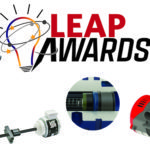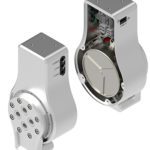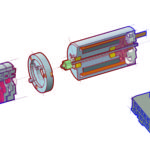Consider a specific example of how strain-wave gearing gets used — in the German Bionic Systems Cray X exoskeleton. This 7.9-kg design assists plant personnel with manual handling of tools and heavy goods while reducing lower-back compression pressure. The exoskeleton joints use strain-wave gearing to reduce their brushless motors’ high rpm for an output of low rotational speed with high torque.

On a related note, at 2018 Consumer Electronics Show harmonic-gearing manufacturer Harmonic Drive exhibited with a team from suitX, designer of the Phoenix walking-assist exoskeleton … which also uses strain-wave gearing.
Exoskeletons are most useful where human work cannot be fully replaced by robotics — in industrial production for automotive, logistics, or and healthcare industries. BIS Research predicts that the market for wearable robotics could grow to U.S. $4.65 billion by 2026.

The Cray X has a battery life of about eight hours give its wearer 15 kg of assist. Worn like a backpack, the Cray X extends down the legs and straps to the user’s thighs. Battery-driven electric motors at the joints then help the user with lifting or (in another mode) stand up straight with a constant vertical force (for core support) after bending down for a task. The Cray X begins actuation when an armband tracking forearm-muscle tension sends feedback to a processor indicating that on object is being lifted. Then the exoskeleton’s strain-wave-gearing-fitted motors go into action.

Production Cray X models are now available for order. “After testing with several industrial companies, we made the first models available. Now, scaling production and further technological development are top priorities for us,” said German Bionic Systems CEO Peter Heiligensetzer.
Heiligensetzer predicts his company’s technology will help trim healthcare costs and (in manufacturing and logistics settings) raise productivity levels. “This technology could solve pressing societal issues now — a time of broad demographic shifts and reported shortages of skilled workers … and exoskeletons may also help workplaces avoid age discrimination.”







Leave a Reply
You must be logged in to post a comment.